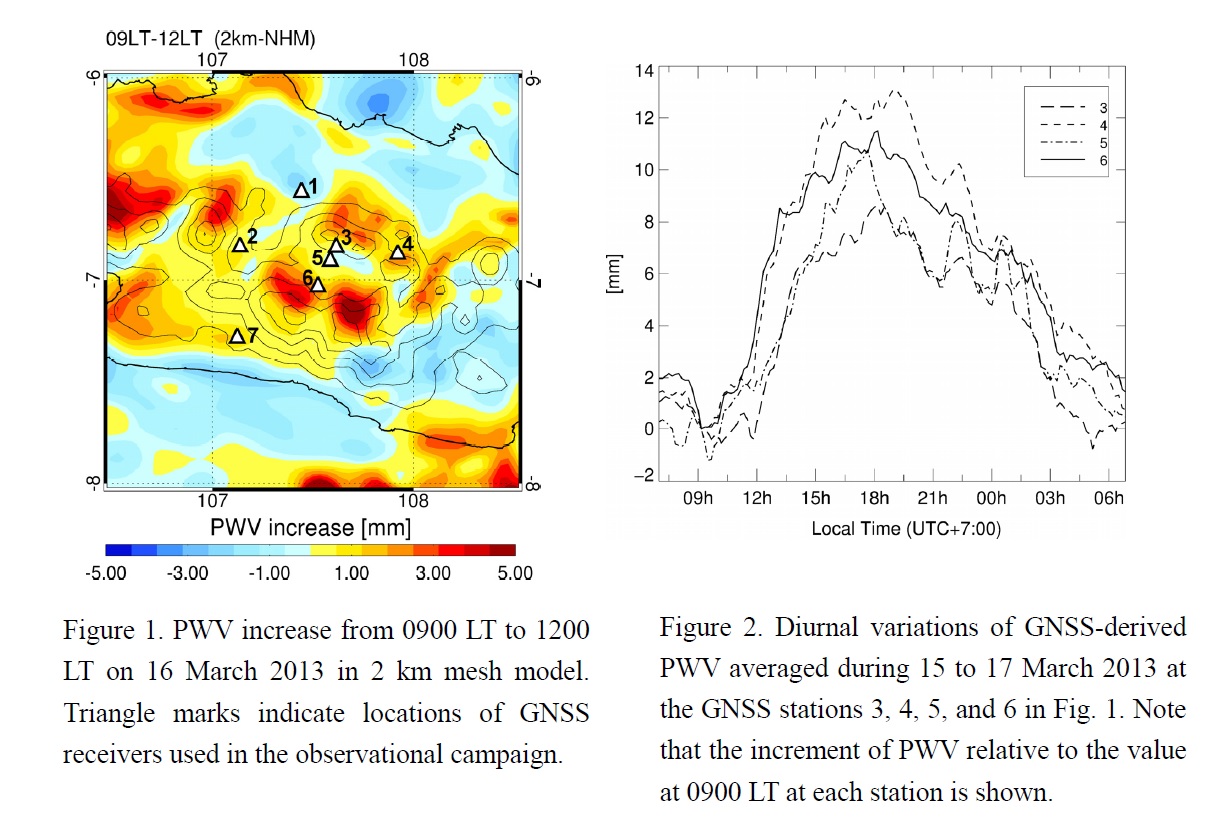Graphical Abstract
Oigawa, M., T. Matsuda, T. Tsuda, and Noersomadi, 2017: Coordinated observation and numerical study on a diurnal cycle of tropical convection over a complex topography in West Java, Indonesia. J. Meteor. Soc. Japan, 95, 261-281.
https://doi.org/10.2151/jmsj.2017-015
Graphical Abstract with highlights
Highlights:
- Mechanisms related to the diurnal cycle of tropical deep convection over a complex terrain were investigated. Observational data was analyzed from X-band radar, Global Navigation Satellite System (GNSS) receivers, and radiosondes, with high-resolution numerical model data.
- A 2 km mesh model successfully simulated the observed diurnal variations of Precipitable Water Vapor (PWV) and rainfall, from 15 to 17 March 2013. In the model, moist air was present in the bottom of the basin during the early morning, which was transported to the southern slope of the basin by valley wind circulation after sunrise (Fig. 1). The valley wind decreased static stability around the southern slope of the basin by transporting moisture. The GNSS receiver network also recorded this simulated water vapor variability associated with the valley wind (Fig. 2).
- These results suggest that water vapor in the bottom of the basin during the morning, and its advection by valley wind, strongly influences convective initiation in Bandung.







